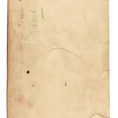 Ever wonder what it would be like to live life as a blonde, a brunette or a redhead? Or to look in the mirror and see what used to be your natural hair color – sans the gray?
Ever wonder what it would be like to live life as a blonde, a brunette or a redhead? Or to look in the mirror and see what used to be your natural hair color – sans the gray?
If so, take heart. You’re in good company. Color is one of the fastest-growing and most exciting chemical services offered in today’s professional hair salons.
It has a folowing as diverse as teenagers aiming to shock with deep blue locks to adults looking to recapture the sun-kissed highlights of youth, or simply erase a few years by covering unwelcome gray.
When it comes to self-expression, the times are, indeed, good. Gone are the days when color was considered a hush-hush service – remember the popular advertising slogan, Only her hairdresser knows for sure? Color, you see, has come charging out of the closet. Today, young and old, male and female are wearing it like a badge of honor.
But how does one successfully enter this age-defying, fashionable world and emerge with truly delightful results?
The secret, unsurprisingly, is knowledge – knowing the possibilities, limitations, maintenance and pitfalls. Only then can one make the best choices and live happily ever after in the wonderful world of color!
So Many Choices
Simply calling a hair salon and booking an appointment for “color” won’t get you very far. There are as many types of color services as there are salons listed in the local directory.
Let’s start with a few basics.
Single-Process Color
The most basic and commonly referred to color service is something called a single-process or one-process color. It’s a type of color – permanent, semi-permanent or demi-permanent – that’s applied to the entire head to create a new base color.
When women say they’re having their hair colored – as opposed to highlighted – it usually means they’re getting a single-process color.
Choosing the right type of single-process color, however, is necessary to achieving the desired results.
Forever On Our Heads
Permanent color is the only type of color capable of covering gray one hundred percent. The other types of color can only partially cover gray, creating what seems to be a translucent stain on those areas.
But this staining effect isn’t necessarily a bad thing. Many women who have only a scattering of gray like the look that a non-permanent color provides: The slightly stained strands can actually look like highlights!
Permanent color has another advantage. It’s the only color that contains ammonia – or an ammonia derivative – which is a necessary ingredient (along with hydrogen peroxide) in the lightening of natural hair color (as high as four levels, in some cases).
The ammonia works by softening the hair so that the cuticle swells, thus allowing the color to penetrate and deposit into the hair shaft, as opposed to only temporarily coloring the cuticle, or outer layer of the hair.
Of course, the downside of permanent hair color, is that it’s just what its name implies – permanent. And, since permanent color cannot lighten permanent color (only natural color up to four levels), it’s necessary to use a special color remover if the hair is to return to a lighter shade.
Here Today . . . Gone Tomorrow
Non-permanent colors, on the other hand – such as semi- and demi-permanents – have traditionally been valued for their no-ammonia and, in the case of semi-permanent colors, no-peroxide, content, which makes them more gentle on the hair. In addition, semi-permanents are true, non-committal colors, since they wash out of the hair after a number of shampoos.
Despite the traditional non-ammonia status of semi- and demi-permanent colors, some color manufacturers have introduced such products with small amounts of ammonia or ammonia derivatives to produce longer-lasting results. Unlike permanent colors, however, such products are unable to lighten the hair or cover gray one hundred percent.
Those concerned with ammonia or other additives, should consult their colorist or contact the product manufacturer before using a non-permanent product.
Up, Up and Away
Sometimes going lighter takes a little more than a traditional single-process permanent color can accomplish. In such cases, colorists often turn to one of two procedures – a highlift color or a double-process service.
A highlift color is one that lifts up to four levels of natural color, while simultaneously depositing color. It differs from a traditional single-process permanent color in that it contains a higher ammonia content, which allows it to consistently reach that level of lift (unlike a traditional single-process permanent color, which cannot always reach that mark).
A double-process is necessary to exceed four levels of lift. In this procedure, a color lightener is used to remove natural color from the hair, and then a toner is applied for color. This is the procedure necessary for turning someone with black hair into a platinum blonde!
Highlights and Lowlights
Highlights do exactly what their name implies – they mimic those beautiful, light strands of hair that some people were born with and others enjoy after a few hours – or days – in the sun.
They can be added to any natural or artificial base color, but are especially popular when paired with dirty blonde or mousy brown hair, because of their ability to transform those base colors into palettes that are completely dazzling and alluring.
Lowlights are exactly like highlights, with one tiny exception: Instead of removing color to create lighter strands that highlight the hair, the colorist uses color to create darker strands that lowlight, or add warmth to, the hair.
Lowlights are especially popular at summer’s end, when they’re used to counteract the over-bleaching caused by sun exposure and to return hair to a warmer shade in time for the fall. Likewise, they are also used to return hair that’s been over-bleached by chemical services to a healthier-looking, more natural shade.
They’re also a wonderful choice for someone who wants to turn back the hands of time by putting a little more pepper back into their salt and pepper locks!
To increase the multi-dimensional effects of highlights and lowlights, colorists can use varying strengths of color lighteners – or different colors – on alternating foils during the procedures.
Every Which Way
Highlights and lowlights can be created in a number of ways – via foils (or highlighting paper), a technique called balyage, or a cap.
The most popular way is via foils (or highlighting paper). In this method, the colorist selects strands of hair, places them on a piece of foil, uses a color brush to cover them with a hair lightener or color, depending on the desired effect, and then folds the bottom edge of the foil up to the top to sandwich in the hair.
Some colorists position a plexi-board between their chest and the client’s head to hold the foil in place, make the lightener or color application easier and get closer to the hair root.
The traditional technique by which a colorist chooses the strands of hair to be treated is called weaving. Colorists choose a section of hair and then, using a metal-ended tail comb, weave out intermittent pieces, which are then placed on the foil for lightening or coloring. A small, fine weave can be used to create a very subtle, natural effect, while a larger weave can be used to create a more funky, chunkier effect.
Sometimes a colorist will use a technique called slicing to choose the strands of hair to be processed. Slicing is the simple selection of hair –sans weaving – for processing. For example, a colorist who wants to add a few chunky highlights to frame the face is using slicing when selecting a section of hair for processing.
Balyage, which means to sweep in French, is a free-form painting technique that has become more popular in the last few years. Instead of weaving or slicing and enlisting the use of foils, the colorist uses a color brush or a special dispensing tool to paint the hair with a lightener or color.
This process is suitable for the creation of more scattered highlights or lowlights and to painting the outer sheath – as opposed to the underside – of the hair.
Some colorists use foils to highlight the hair and balyage to add a few lowlights for greater dimension.
Caps – which are snuggly fitting headpieces covered with tiny holes – are used mostly for adding highlights or lowlights to very short hair. The colorist places the cap (traditionally made of latex and rubber, but also available in foam and plastic) on the client’s head and then, using a crochet hook, pulls hair through the tiny holes. The exposed hair is then covered with a lightener or color to produce the desired effect.
Everything In Its Place
There are several ways to describe the amount and placement of foil highlights and lowlights in the hair – notably full-head, half-head, partial-head and framing.
A full-head is obviously the most extensive of the choices, creating an all-over effect of highlighted hair. A half-head usually refers to an area that reaches from the front and front-sides of the hair to the imaginary line where the ears end. Although the term partial-head can refer to anything less than a full-head, it’s usually considered a somewhat open-ended term that refers to no specific area, but is less than a half-head. Framing – a type of partial-head – refers to the placement of foils around the face to add brightness.
Well-Toned
Once highlighted hair has processed, it’s time to remove any highlighting aids (such as foils or a cap), shampoo the lightener out of the hair and apply a toner. A toner, which can be a permanent, semi-permanent or demi-permanent color, does just what its name implies: It lends a tone to the newly lightened strands of hair.
The nice thing about many non-permanent toners is that they gradually wash out of the hair, which allows for greater flexibility when it comes to changing to a different tone.
Keeping the Look
Color maintenance – the frequency with which one will be at the salon to maintain a chosen color – should be carefully considered when choosing a color service.
Permanent and demi-permanent colors usually require a touch-up every four-to-six weeks, as new hair appears from the scalp. The greater the difference in color between the newly appearing hair and the permanent color, the more noticeable the roots. A brunette who decides to go blond should be prepared for an aggressive maintenance schedule – possibly every three weeks – as even the slightest hair growth will create a line of demarcation.
Semi-permanent color is much more forgiving, gradually washing out of the hair after about 10-to-12 shampoos for the longer-lasting colors and 4-to-6 shampoos for the traditional colors. But while semi-permanent color won’t leave a line of demarcation – or roots – it does lose a little of its vibrancy with each shampoo.
There are several ways to maintain a full-head of highlights or lowlights. Under one schedule, a full-head is followed by one or two return visits to the salon at four-to-six week intervals to touch-up the re-growth at the crown, and then a return visit for a full-head.
Under another schedule, a full-head is followed by a half-head about three months later, then a full-head three months after that, and so on.
Getting Rid of Color
Color removal refers to the removal of permanent color from the hair – a necessary procedure anytime someone with artificial color wants a lighter shade, or has a build-up of color in their hair.
Color build-up is usually the result of botched, at-home color sessions. For example, it’s not unusual for at-home “colorists” to put permanent color over their entire head each time they color their hair. What they fail to realize is that they’re creating a color build-up by re-coloring parts of their hair over and over again with each application. What may have once looked good, eventually looks like a series of color bands throughout the hair.
A professional colorist, on the other hand, will approach a touch-up by putting permanent color on the new growth – or virgin hair – only. Toward the end of the processing time, some colorists will then run the permanent color through the rest of the hair to re-fresh the color, while others will use a semi-permanent color to re-fresh the previously colored areas.
When properly used, color removal is one of the most effective tools to corrective color, which is, by definition, the undoing of previous color services.
Those tempted to use a permanent color to make their lighter locks darker should remember that lighter colors can be made darker, but darker permanent colors cannot be made lighter – without first removing color. When torn between two permanent colors, it’s always best to choose the lighter of the two, as it leaves the option of going darker with a simple color application.
Getting Your Fill
Sometimes it’s necessary to fill the hair in order to achieve a particular color, address issues of porosity, or return the hair to a state of vibrancy. In this procedure, colorists basically add missing color pigments that exist at the level of the target color.
Someone who wants to tint back (or make their hair more than two levels darker than their existing color), will first need to fill their hair with the color pigments that exist at that target level.
Likewise, someone whose hair is very porous (perhaps due to over-bleaching), will most likely need their hair filled, as will someone whose hair has become dull and void of vibrancy and richness at the ends.
What’s Your Level?
Levels are professional colorist lingo for describing hair color. For example, in the level system, which is used by many major color manufacturers – especially those from Europe – Levels 1-through-5 usually represent hair that’s black to medium/light brown; and Levels 6-through-12 usually represent hair color that’s light brown to extra light blonde.
Of course, not every color manufacturer that uses a level system follows the same guidelines. Some, for example, define those same colors within the context of Levels 2-through-10, and while one manufacturer may call a Level 6 a light brown, another may call it a dark blonde.
Trickier Than It Looks
Practicing color is far trickier than it looks! After all, there’s good reason why so many non-colorists haven’t a clue as to why their at-home efforts produced hair that’s (gasp!) pink, green, or some other unwanted hue!
At the basic root of man (but alas, not all!) such problems is the fact that most novices have no understanding of what’s commonly called the Law of Color. This law – which is well known to those with an art background – defines the composition of colors and how they interact with one another.
For example, there are primary, secondary and tertiary colors, with primary colors being yellow, red and blue; secondary being orange, violet and green (created by combining two primary colors); and tertiary being such colors as blue-violet and yellow-orange (created by mixing primary colors with their neighboring secondary colors).
Of course, it gets far trickier after that. Skilled colorists recognize that all haircolor is tertiary, but contains dominating primary or secondary colors – an important distinction when it comes to turning that green hair into a beautiful and desired shade!
If you’re considering a major color change, it definitely pays to have it done first by a professional. Once you’ve got the color you like, you can match it closely to a store-bought formula, if you prefer to keep up the maintenance yourself.
Like fashion, hair color trends come and go. With the new advances in hair color and the many ways of adding or altering color now, why stay with the color you’ve always had? Experiment, play, try something new from time to time. Ask your colorist what’s the latest and greatest. Don’t be a square when it comes to your hair! Have some fun and let a little color go to your head.
The author wishes to thank the following for their valuable contribution to this story: Tom Dispenza, president of the Worldwide HairColorists Association and senior manager of training at Clairol, New York, N.Y., and Bruce Klein, national programs manager at Goldwell Cosmetics, USA, Linthicum Heights, Md.
This article was originally written for BeautyWalk.com, a beauty website founded by Peter Lamas, and now resides on www.LamasBeauty.com .



















{One Comment}